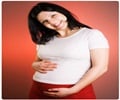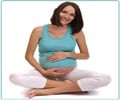Is there a significant decrease in fertility among women with endometriosis? Discover the implications and importance of early diagnosis and treatment.
- Women with endometriosis had half the number of first live births compared to those without the condition
- The live birth rate declined in both groups, but the decline was more pronounced in women with endometriosis
- Early diagnosis and effective treatment are crucial in minimizing the impact of endometriosis on fertility
First live birth before surgical verification of endometriosis-a nationwide register study of 18 324 women
Go to source). Researchers in Finland discovered that the number of first live births in the period before diagnosis was half that of women without the painful illness in the first study to look at birth rates in a large cohort of women who subsequently obtained surgical confirmation of endometriosis. It was true regardless of whether the women had ovarian, peritoneal, deep endometriosis, or another type of endometriosis. Furthermore, the researchers discovered evidence that the number of kids women had before being diagnosed with endometriosis was dramatically reduced when compared to women who did not have endometriosis.
Don't Let Endometriosis Affect Your Fertility
Professor Oskari Heikinheimo, of Helsinki University Hospital (Finland), who led the study, said, "Our findings suggest that doctors who see women suffering from painful menstruation and chronic pelvic pain, should keep in mind the possibility of endometriosis and treat them effectively. Doctors should discuss with these women the possible effects on their fertility, in addition to the effects of their age, and the impairment of fertility should be minimized by offering relevant treatment for endometriosis without delay."Endometriosis is a chronic inflammatory disease that affects up to 10% of women of reproductive age. Tissue from the uterine lining grows in various areas, including the ovarian and fallopian tubes. Painful menstruation, pelvic pain, difficult or painful sexual intercourse, and trouble getting pregnant are all common symptoms (2✔ ✔Trusted Source
Endometriosis
Go to source).
Correct diagnosis is frequently delayed by seven years. Although diagnosis by ultrasonographic evidence or symptoms alone is now accepted, surgery has long been the "gold standard" for diagnosing the condition and defining the kind of endometriosis.
How Endometriosis Affects Fertility
Until now, little is known about the live birth rate among women with endometriosis, and much less is known about the potential implications of different forms of endometriosis on fertility, particularly in the years preceding a diagnosis."Given the chronic nature and typical long delay in diagnosis of endometriosis, we wanted to find out if there were differences in first birth rates before diagnosis in a large group of women in the population," said Prof. Heikinheimo.
He and his colleagues studied 18,324 Finnish women between the ages of 15 and 49 who had endometriosis surgically confirmed between 1998 and 2012. They matched them with 35,793 other women their age who did not have endometriosis. The follow-up period began at the age of 15 and lasted until the first live delivery, sterilization, ovaries or womb removal, or surgical diagnosis of endometriosis, whichever happened first. Endometriosis patients were further classified into four groups based on the kind of endometriosis.
Before surgical diagnosis, the average (mean) time of follow-up was 15.2 years. The average (median) age at the time of endometriosis diagnosis was 35 years.
Live Birth Rate Decreases in Women with Endometriosis
During the follow-up period, a total of 7,363 women (40%) with endometriosis and 23,718 women (66%) without endometriosis delivered a live baby. Women with endometriosis had half the number of first live births as women without the condition (0.51%).The birth rate declined in both groups of women when the birth decade was evaluated from the 1940s to the 1970s. Importantly, compared to women without endometriosis, women with endometriosis had a decreased rate of first live birth. Before medically diagnosed endometriosis, the difference in live birth rates between the two groups was 28% in women born between 1940 and 1949, but this disparity climbed progressively to 87% by 1970-1979.
"We assume that this is associated with the older age of women when they have their first baby, earlier surgical diagnosis of endometriosis and accumulating adverse effects of endometriosis in women affected by the condition," said Prof. Heikinheimo.
Effect of Endometriosis on the Desired Number of Children
Women with endometriosis had an average of 1.93 children, while women without endometriosis had an average of 2.16 children. "The possible effect of endometriosis on the desired number of children highlights the importance of early diagnosis and treatment of the disease," he said.He continued, "It is important to note that this study reports on live births before a definitive diagnosis of endometriosis. Next, we will be reporting on fertility rates after the surgical diagnosis and treatment of endometriosis. We hope that the fertility of women with endometriosis catches up with that of the women without the condition after surgical management."
The study's strength is its huge size, as well as the fact that it incorporates information about women throughout Finland from high-quality Finnish national health care registers. There are certain restrictions. Its emphasis on only surgically diagnosed endometriosis may have excluded women with milder symptoms who were treated for the illness. There was no information on whether or not ladies wanted to become pregnant.
The researchers could not rule out the possibility of fertility therapies or adenomyosis, which is associated with endometriosis and impacts fertility and pregnancy outcomes. The findings could have been influenced by differences in socioeconomic and educational backgrounds between the two groups of women.
References:
- First live birth before surgical verification of endometriosis-a nationwide register study of 18 324 women - (https://academic.oup.com/humrep/advance-article/doi/10.1093/humrep/dead120/7218807)
- Endometriosis - (https://pubmed.ncbi.nlm.nih.gov/30994890/)















